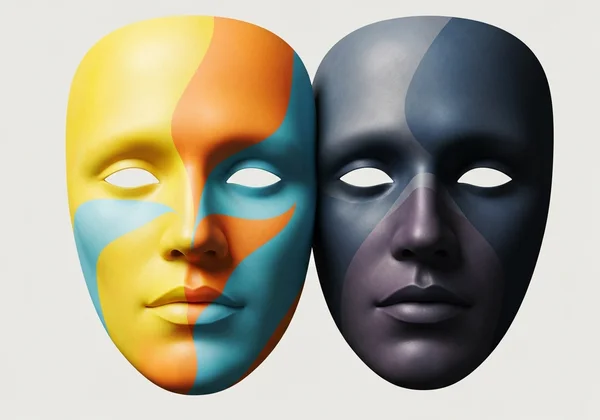Bipolar Disorder Test: A Practical Guide for Supporting Loved Ones
Supporting a loved one through the complexities of bipolar disorder can feel like navigating an unfamiliar landscape without a map. It's a journey filled with deep concern, confusion, and a powerful desire to help. This guide is designed to be your compass, equipping you with the knowledge, strategies, and resources to offer meaningful support while also caring for your own well-being. Understanding the condition is the first step toward becoming an effective and compassionate ally.
Many supporters find themselves asking, Is there a test for bipolar disorder? While a formal diagnosis must come from a professional, a preliminary screening can provide crucial insights. A Bipolar Disorder Test can be a gentle way to start a conversation and understand the patterns your loved one is experiencing. Our goal is to walk you through understanding the signs, communicating effectively, encouraging professional help, and practicing essential self-care. You are not alone on this path.
Understanding Bipolar Disorder: What You Need to Know
Before you can offer effective help, it's vital to build a foundational understanding of what bipolar disorder is—and what it isn't. Knowledge dispels fear and replaces it with empathy, allowing you to see the person beyond the diagnosis. It’s about learning their new reality to better support them through it.
Dispelling Common Myths and Stigma
One of the biggest hurdles is overcoming societal stigma. Bipolar disorder is not a sign of a weak character or a simple case of being "moody." It is a complex neurobiological condition that affects brain function, causing intense shifts in mood, energy, and activity levels. Dispelling these myths is the first step toward creating a safe, non-judgmental space for your loved one.
Exploring Different Types of Bipolar Disorder
The term "bipolar" is an umbrella for several related conditions. Understanding the distinctions can help you recognize specific patterns in your loved one. Bipolar I is defined by at least one manic episode, which may be followed by hypomanic or major depressive episodes. Bipolar II involves at least one hypomanic episode and one major depressive episode, but without the full-blown manic episodes of Bipolar I. Cyclothymia involves periods of hypomanic and depressive symptoms that are not severe enough to be major episodes.
The Impact on Daily Life and Relationships
The intense emotional highs and lows of bipolar disorder can profoundly disrupt daily life. During manic phases, a person might make impulsive decisions about finances or relationships. During depressive phases, they may struggle to get out of bed or maintain basic routines. This unpredictability can strain relationships, but with understanding and a solid support system, stability is achievable. For initial clarity, a confidential self-screening can help identify these patterns.

Recognizing the Signs: Spotting Bipolar Symptoms in Loved Ones
As a concerned supporter, you are often in a unique position to observe behavioral patterns that your loved one may not see themselves. Learning to recognize the key signs of mania, hypomania, and depression is crucial for knowing when to offer support and encourage professional help.
Identifying Manic and Hypomanic Episodes
Manic episodes are the "highs" of bipolar disorder. Look for a distinct period of abnormally elevated energy, euphoria, or irritability. Symptoms include decreased need for sleep, rapid speech, racing thoughts, distractibility, and impulsive behavior like spending sprees or reckless decisions. Hypomania is a less severe form of mania, where the person may feel highly productive and energetic but can still function in daily life.
Understanding Bipolar Depression Symptoms
The "lows" of bipolar disorder can be debilitating. Bipolar depression often looks like major depression, with symptoms including persistent sadness, loss of interest in activities, changes in sleep or appetite, fatigue, and feelings of worthlessness. However, it can be more resistant to standard antidepressant treatments, making a correct diagnosis essential. An online bipolar disorder test can be a useful tool for distinguishing these symptoms.
Tracking Mood Swings and Behavioral Patterns
Observing and gently documenting patterns can be incredibly helpful. Note the duration and intensity of mood episodes, sleep patterns, and any specific triggers you notice. This information is not for confrontation but can be invaluable if your loved one decides to speak with a doctor. It provides concrete examples that go beyond subjective feelings, painting a clearer picture for a potential diagnosis.

Effective Communication & Support Strategies
How you communicate with your loved one can either build bridges or create walls. Your role is not to "fix" them but to offer a stable, loving presence. This requires patience, empathy, and strong communication skills.
Active Listening and Empathetic Responses
Often, the most powerful thing you can do is listen without judgment. When your loved one shares their feelings, try to understand their experience rather than immediately offering solutions. Use empathetic phrases like, "That sounds incredibly difficult," or "I'm here for you." This validates their feelings and strengthens their trust in you as a safe confidant.
Setting Healthy Boundaries and Expectations
Supporting someone with bipolar disorder can be emotionally taxing. It is vital to set healthy boundaries to protect your own mental health. This means knowing your limits, saying no when you need to, and understanding that you are not responsible for managing their illness. Healthy boundaries are not selfish; they are necessary for a sustainable, long-term supportive relationship.
What to Say (and What Not to Say)
Words have immense power. Avoid dismissive phrases like "Just snap out of it" or "Everyone has bad days." Instead, use supportive language: "I care about you," "I'm concerned about you," and "How can I help?" Focus on the person, not the illness, and always approach conversations from a place of love and concern. If you need a starting point for discussion, the insights from a free screening tool can provide a neutral foundation.

Encouraging Professional Help: Gentle Guidance
Your encouragement can be the catalyst for your loved one seeking the professional help they need. However, this conversation must be handled with sensitivity and care. The goal is to empower them, not to force them into a decision.
When and How to Suggest Seeking a Doctor
The best time to bring up seeking help is during a period of relative stability, not in the middle of a crisis. Frame it as an act of love and concern for their well-being. You might say, "I've noticed you've been struggling lately, and it hurts me to see you in pain. Have you considered talking to a professional to see if they can help?"
Navigating the Diagnosis Process Together
Offer to support them through the process. This could mean helping them find a qualified psychiatrist or therapist, driving them to appointments, or sitting in the waiting room. A formal bipolar disorder diagnosis test involves a comprehensive psychiatric evaluation, not a simple blood test. Being a part of this journey shows them they don't have to face it alone. You can get initial insights to prepare for this step.
Finding the Right Mental Health Professionals
Help your loved one research and find mental health professionals who specialize in mood disorders. Look for psychiatrists for medication management and therapists for talk therapy (psychotherapy). Patient reviews and professional directories can be excellent resources. The right professional team is a cornerstone of effective long-term management.
Self-Care for the Supporter: Don't Forget Yourself
You cannot pour from an empty cup. Caring for someone with a serious mental health condition can lead to burnout, stress, and anxiety. Prioritizing your own well-being is not a luxury—it is an absolute necessity.
Managing Your Own Stress and Emotions
Find healthy outlets for your own stress. This could be exercise, meditation, journaling, or engaging in hobbies you love. Acknowledge your feelings of frustration, sadness, or fear without guilt. It's normal to have these emotions, and processing them is key to staying resilient.
Building Your Support Network
You also need a support system. Connect with trusted friends, family members, or a support group for caregivers of people with mental illness. Sharing your experiences with others who understand can provide immense relief and practical advice. You don't have to carry this burden in isolation.
Recognizing When You Need Help
If you find yourself feeling overwhelmed, anxious, or depressed, it is a sign that you need to seek your own professional help. A therapist can provide you with coping strategies and a safe space to process your own emotional journey. Taking care of yourself is the best thing you can do for both you and your loved one.

Empowering Your Journey: A Path Forward
Supporting a loved one with bipolar disorder is a marathon, not a sprint. It requires a deep well of patience, empathy, and resilience. By educating yourself, communicating with compassion, and prioritizing your own self-care, you can be a powerful force for stability and hope in their life. Remember that recovery is possible, and your unwavering support is a vital part of that process.
Every journey begins with a single step. If you and your loved one are looking for a confidential place to gain initial clarity, a great starting point is to take the first step with an online screening. It can open the door to a meaningful conversation and the path toward professional care.
Frequently Asked Questions About Supporting Someone with Bipolar Disorder
How do you get someone tested for bipolar disorder?
You cannot force an adult to get tested, but you can gently encourage them. The process starts with a comprehensive evaluation by a psychiatrist or other mental health professional. You can support them by helping them find a doctor and offering to accompany them. A preliminary online screening at a site like BipolarDisorderTest.org can be a low-pressure way to begin exploring their symptoms.
What are the early signs of bipolar disorder in a loved one?
Early signs often include noticeable mood swings that are more extreme than usual, changes in sleep patterns (sleeping much less or more), increased energy and risky behavior (hypomania), followed by periods of low mood, withdrawal, and fatigue (depression). These patterns may start subtly and become more pronounced over time.
What is commonly mistaken for bipolar disorder in family members?
Conditions like major depressive disorder, anxiety disorders, attention-deficit/hyperactivity disorder (ADHD), and borderline personality disorder (BPD) can have overlapping symptoms. For example, the irritability in mania can be mistaken for anger issues, and the impulsivity can overlap with ADHD or BPD. This is why a professional evaluation is critical for an accurate diagnosis, and a screening tool can help organize observations. You can learn more here.
What happens if bipolar disorder is left untreated in a loved one?
Untreated bipolar disorder can have serious consequences. Mood episodes may become more frequent and severe over time, leading to damaged relationships, job loss, financial problems, and an increased risk of substance abuse and suicide. Early intervention and consistent treatment are crucial for long-term stability and quality of life.
Disclaimer: This article is for informational purposes only and does not constitute medical advice. The content is not intended to be a substitute for professional medical advice, diagnosis, or treatment. Always seek the advice of your physician or other qualified health provider with any questions you may have regarding a medical condition. The screening tool on BipolarDisorderTest.org is a preliminary self-assessment and not a diagnostic instrument.